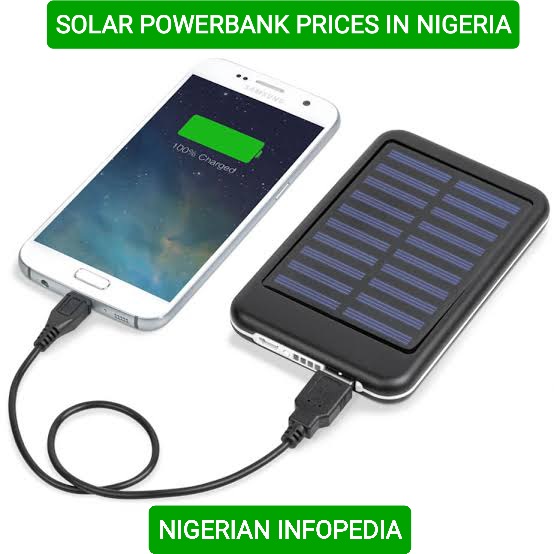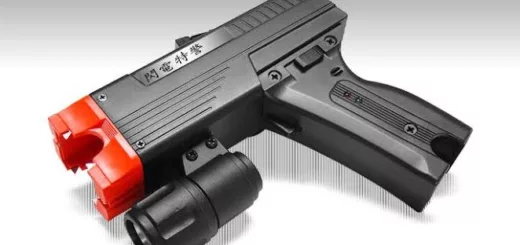Current Prices of Original Solar Power Banks in Nigeria (2026)
Among the most crucial mobile gadgets today is the power bank. Apart from helping to alleviate the disturbing effects of the country’s unpredictable power supply, the device also serves as a convenient and practical means to power and charge mobile devices. In this write-up, we will look at how much solar power banks cost in Nigerian markets today.

LATEST PRICES OF SOLAR POWER BANKS IN NIGERIA (2026)
Power banks come in a variety of sizes, styles, and classifications, and their output power quality varies. While certain well-known brands have long dominated this industry, newer businesses are beginning to emerge with high-end, high-quality designs that include innovative user-friendly features.
The pricing of some of the most popular solar power bank products on the market today are shown below.
- Phily 10000mAh Dual Usb Solar Fast Power Bank Charging — ₦6,500 – ₦15,000
- 20,000MAh Power Bank With Solar Panel — ₦8,000 – ₦12,000
- Dp Solar Power Bank – 5000Mah (DP-7707B) — ₦7,900 – ₦47,500
- Fit 20000mAh Smart Solar + Electric PowerBank — ₦9,000 – ₦10,000
- Solar Hand-cranked Portable Power Banks 12000mAh Green — ₦9,400 – ₦18,000
- Solar Power Bank 8000mAh Water Resistant, 2 USB Port (Only) — ₦7,200 – ₦10,500
- Saroda 3.7V/3000mAh Solar Power Bank For LED Lights & Digital Devices — ₦6,800 – ₦7,000
- Solar Power Bank Water Resistant, USB Port (Only) — ₦6,000 – ₦15,000
- Mobile Power Bank 30000mah 3-Port Charger With USB-C. — ₦20,000 – ₦35,000
- Dual USB Solar Charger Power DIY Case — ₦1,999 – ₦2,500
- Fit 20000mAh Smart Solar + Electric PowerBank — ₦9,000 – ₦10,000
- 20,000MAh Power Bank With Solar Panel — ₦8,999 – ₦10,000
- Phily Solid Solar Power Bank 10000mAh Dual Usb Powerbank — ₦9,500 – ₦16,000
- Havit Quality Solar Power Bank 10000mAh Dual Usb Powerbank Fast Charging — ₦7,500 – ₦10,000
- MAGINON 10,000mAh Solar Power Bank With Flashlight — ₦6,500 – ₦12,000
- TENFLY Solar Power Bank 16000mAh — ₦6,500 – ₦8,000
- Solar Power Bank 8000mAh Water Resistant, 2 USB Port (Only) — ₦7,400 – ₦9,200
- Rohs Philly H5221 10000mAh Solar Power Bank With Dual USB — ₦7,200 – ₦10,000
- Solar Battery Pack Wireless Power Bank — ₦32,000
- Anker PowerCore Solar 10000 18W USB-C Power Bank — ₦40,000
- Rohs Philly H5221 10000mAh Solar Power Bank With Dual USB — ₦7,200 – ₦12,000
- Rohs ORIGINAL Philly H5221 10000mAh Solar Power Bank With Dual USB — ₦11,450 – ₦18,000
- TIGER WORLD Newly Designed Durable Solar Lighting Kit With Power Bank — ₦14,000 – ₦25,000
- TIGER WORLD Newly Designed Durable Solar Lighting Kit With Power Bank — ₦15,000 – ₦25,000
Valuations for popular power bank gadgets in Nigeria are shown in the list above. The cost estimate is based on information gathered in the present market. The price differences are due to a variety of factors, including currency conversion rates, location and time of order, and other relevant considerations. Some brands are reasonably priced, while others are not.
FACTORS TO NOTE BEFORE PURCHASING A SOLAR POWER BANK
Just like the normal power banks, solar power banks come in a variety of shapes and sizes, as well as different levels of quality. They also differ in terms of size, performance, and longevity. Even though most decent power bank devices are quite efficient, there are a few key considerations to evaluate before purchasing one.
Choosing between the numerous types of solar power banks on the market at the moment might be difficult. Though you might be tempted to believe that there isn’t much of a discrepancy between both the varying sorts, this isn’t entirely true. Here are a few things to think about while purchasing a power bank.
BRAND
Notwithstanding the power capacity of the power bank, the brand is an important consideration when purchasing a solar power bank. Though some firms have positioned themselves as market leaders, others are still attempting to figure out where they fit in. It is recommended that you choose a well-known brand in the market. You can check customer reviews to discover what others have to say about the brand.
PORTABILITY
Prior to actually purchasing any solar charger for oneself or personal devices, it is critical to consider portability. The mobility of any equipment, including the solar charger, is critical. However, it all relies on your lifestyle, manner of operation, and motivation for purchasing a solar charger. And besides, and that’s what you asked for and paid for, so the bigger the solar charger, the more charging current you get.
CAPACITY OF CHARGING
Purchasing a 4 or 5 watt panel is OK for little gadgets like a cellular phone or music player, but for high-end smartphones like iPhones and Galaxy, you’ll need a 7 watt panel to ensure that you can power many smart phones.
Every device’s battery capacity, kind, and total output are just as crucial as the panel. If you truly want to start charging a lot of devices, you should acquire 15 watts of electricity. But don’t panic; several firms are already combining two to four USB ports into a single solar charger.
TYPE OF PANEL — CIGS, MONOCRYSTALLINE OR POLYCRYSTALLINE
The sorts of mobile panels, which include CIGS, Monocrystalline, and Polycrystalline, are another set of rules to follow. Although both of these panels contain silicon crystals, a monocrystalline panel is composed of a single crystal, whilst a polycrystalline panel is made up of many crystals.
Monocrystalline panels are dark and are thought to become more power saving than polycrystalline panels. They may also perform better in low light, but they can be more expensive.
Low-light performance is said to be slightly better with CIGS panels. The thin film solar cells used in the flexible panels are CIGS thin film solar cells (which stands for copper, indium, gallium and selenide). Keep in mind that while CIGS is less expensive to produce and lightweight, it does not endure as far as denser monocrystalline panels.
Monocrystalline panels show up extra black and price very little to produce, as such you pay little. Polycrystalline panels get a bluish hue, whilst monocrystalline panels show up extra black and price less to fabricate, as such you pay fewer. Monocrystalline is the way to go for small-scale users.
INTERNAL OR EXTERNAL BATTERY
While picking your new solar power bank, keep in mind that there are two types of batteries: internal and external. Several chargers include built-in storage batteries, while others may require external storage batteries. External batteries are usually less expensive, large, and heavier than internal batteries.
CONCLUSION
That’s the size of this write-up on the cost of solar power banks in Nigeria. We hope this was very informative for you to know what to budget for a new renewal power source for your mobile gadgets.
